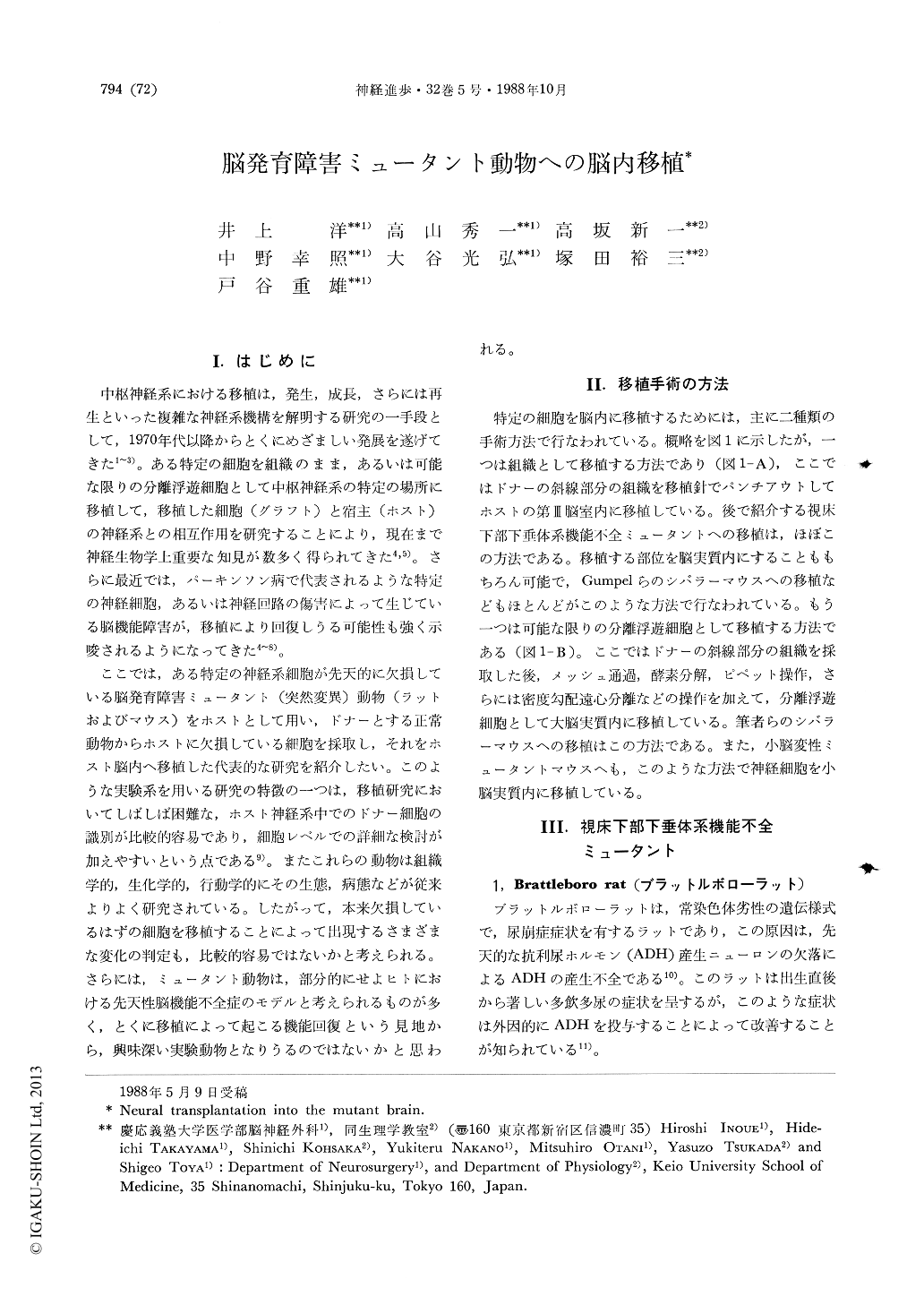Japanese
English
- 有料閲覧
- Abstract 文献概要
- 1ページ目 Look Inside
I.はじめに
中枢神経系における移植は,発生,成長,さらには再生といった複雑な神経系機構を解明する研究の一手段として,1970年代以降からとくにめざましい発展を遂げてきた1〜3)。ある特定の細胞を組織のまま,あるいは可能な限りの分離浮遊細胞として中枢神経系の特定の場所に移植して,移植した細胞(グラフト)と宿主(ホスト)の神経系との相互作用を研究することにより,現在まで神経生物学上重要な知見が数多く得られてきた4,5)。さらに最近では,パーキンソン病で代表されるような特定の神経細胞,あるいは神経回路の傷害によって生じている脳機能障害が,移植により回復しうる可能性も強く示唆されるようになってきた4〜8)。
ここでは,ある特定の神経系細胞が先天的に欠損している脳発育障害ミュータント(突然変異)動物(ラットおよびマウス)をホストとして用い,ドナーとする正常動物からホストに欠損している細胞を採取し,それをホスト脳内へ移植した代表的な研究を紹介したい。このような実験系を用いる研究の特徴の一つは,移植研究においてしばしば困難な,ホスト神経系中でのドナー細胞の識別が比較的容易であり,細胞レベルでの詳細な検討が加えやすいという点である9)。またこれらの動物は組織学的,生化学的,行動学的にその生態,病態などが従来よりよく研究されている。
Neural grafting has emerged over the last decade as a viable approach to studying the development and regeneration of the neural connections in the CNS of mammals.
In this review paper, we have collected some experiments all have a similar basic design using the mutant as an experimental animal. Matured oligodendrocytes have been able to survive and myelinate the host axons even in the adult brain of shiverer mutant mouse which is characterized by dysmyelination in the CNS. Dissociated granule cells of the cerebellar primordia have been able to develop synaptic organization in the cerebellum of weaver mutant mouse which is characterized by degeneration of granule cells. Moreover, neu-rohormone deficiencies in Brattleboro rats or mutant hypogonadal mice have been reversed by the grafted hypothalamic vasopressin-secreting neuronsor gonadotropin-secreting neurons, respectively.

Copyright © 1988, Igaku-Shoin Ltd. All rights reserved.


